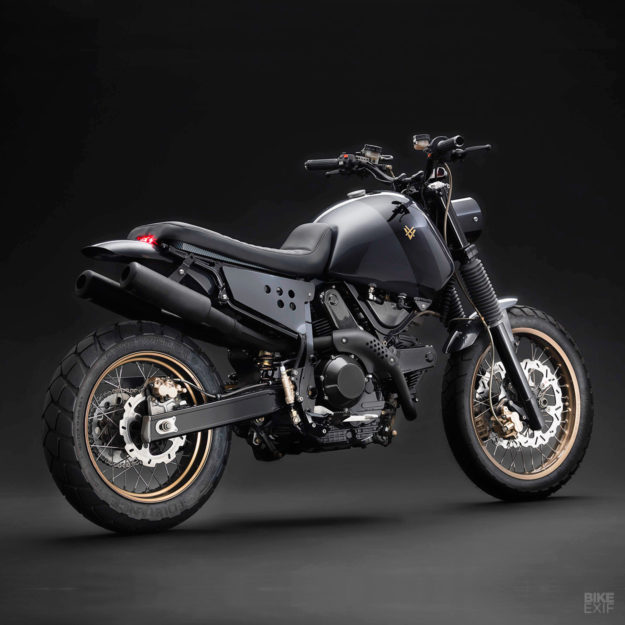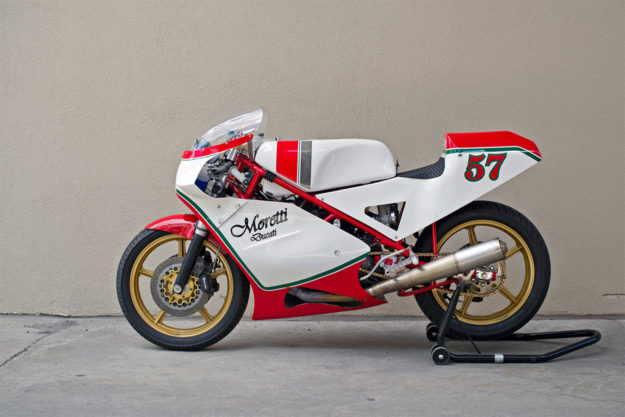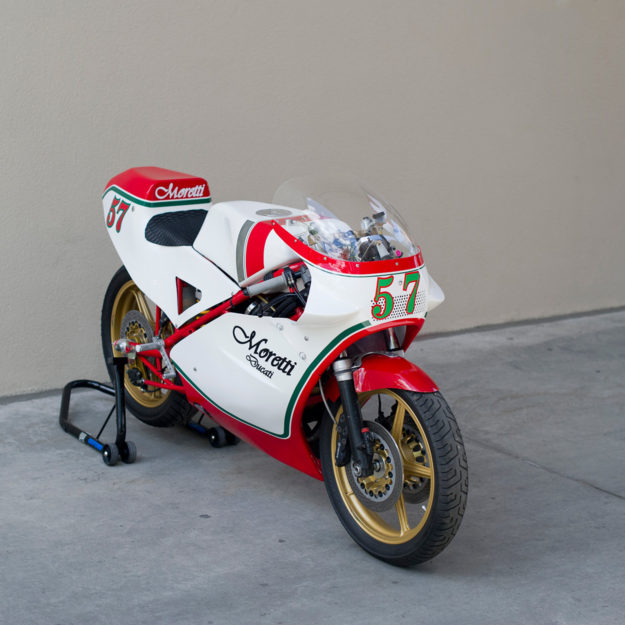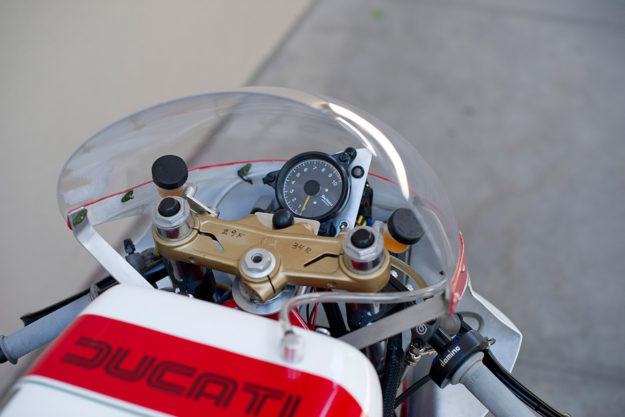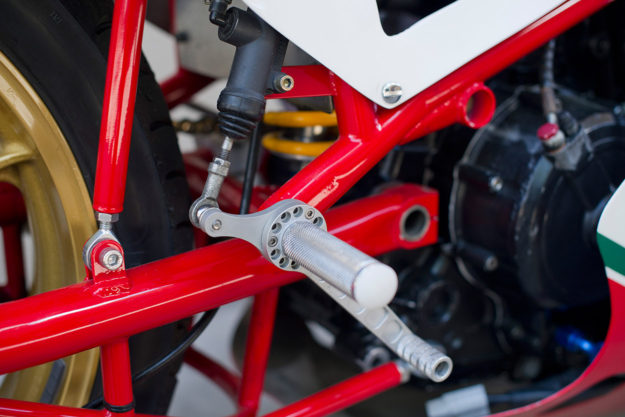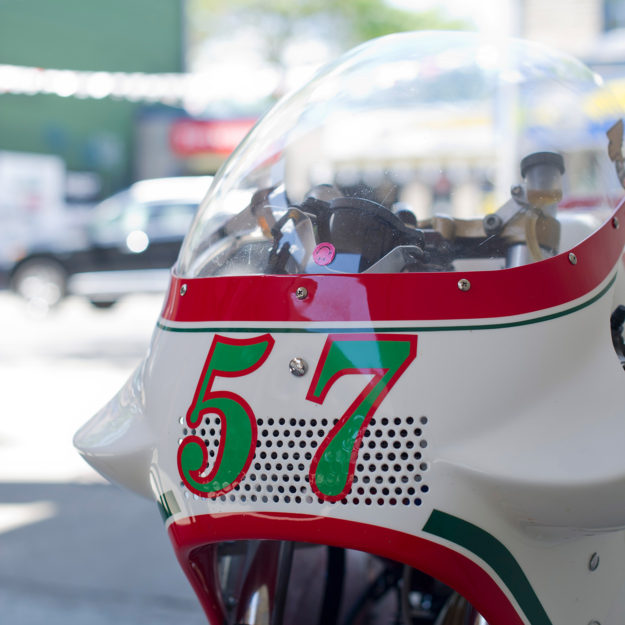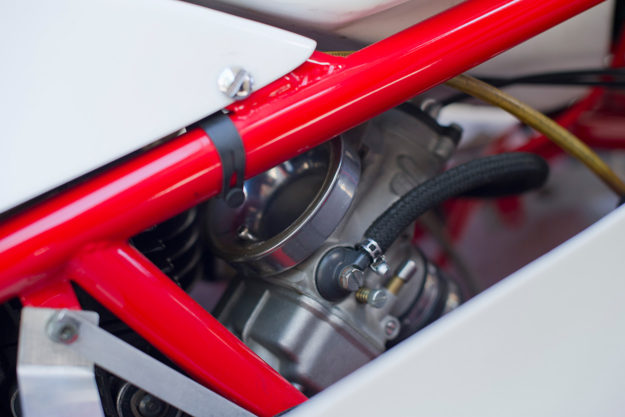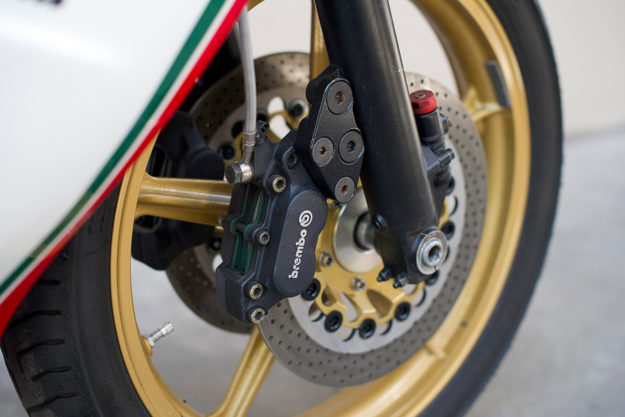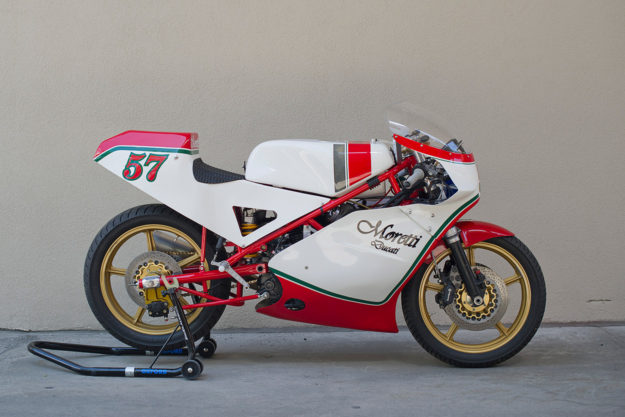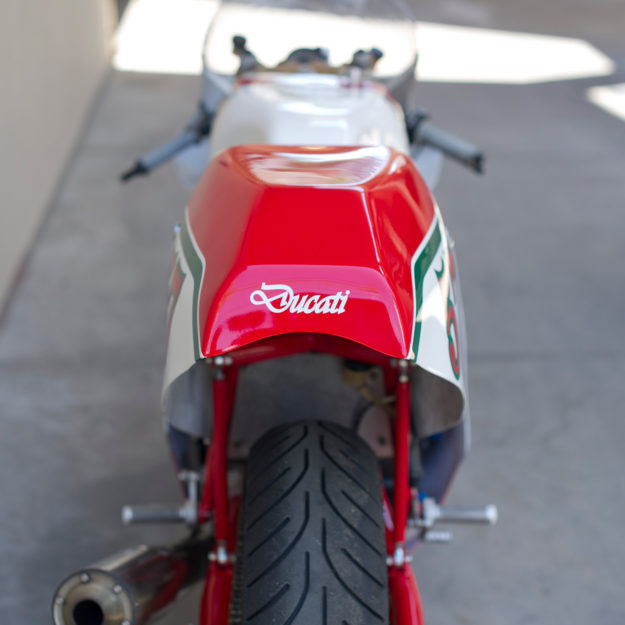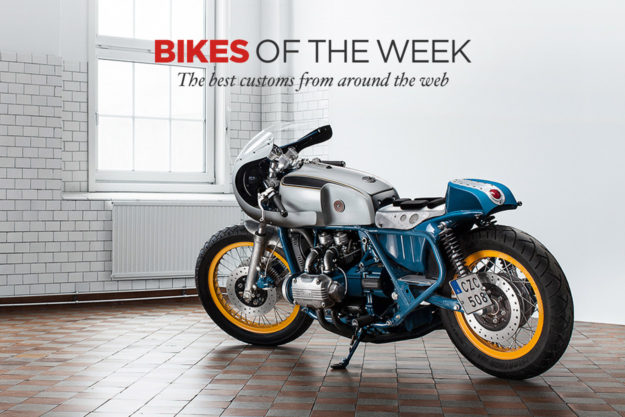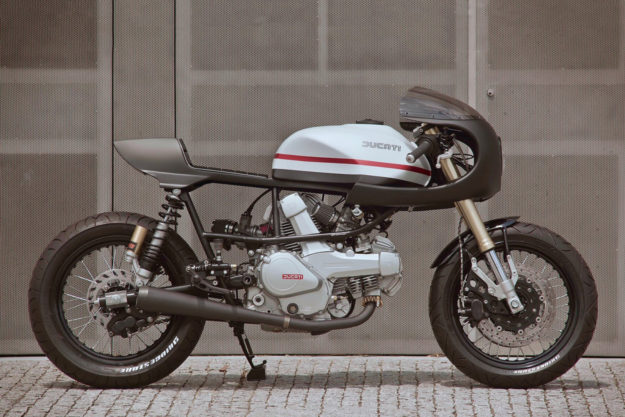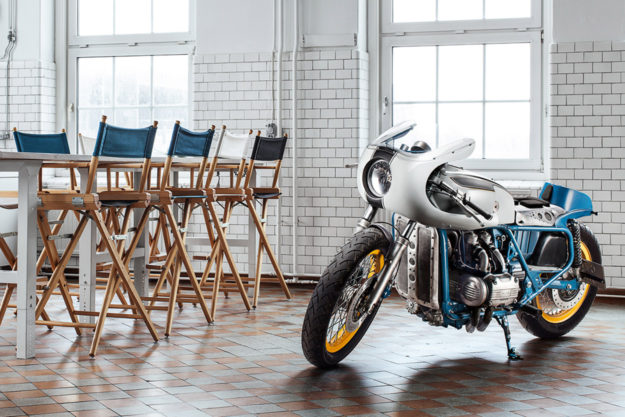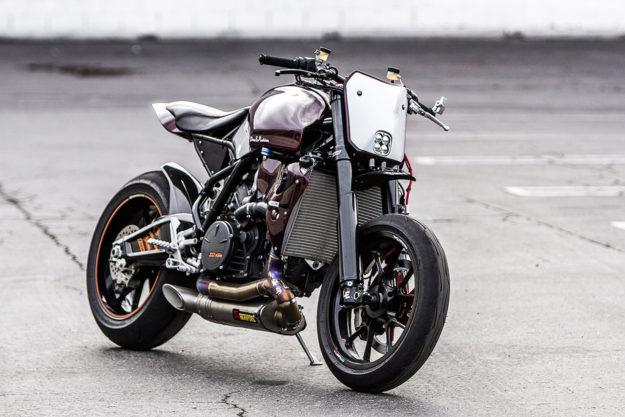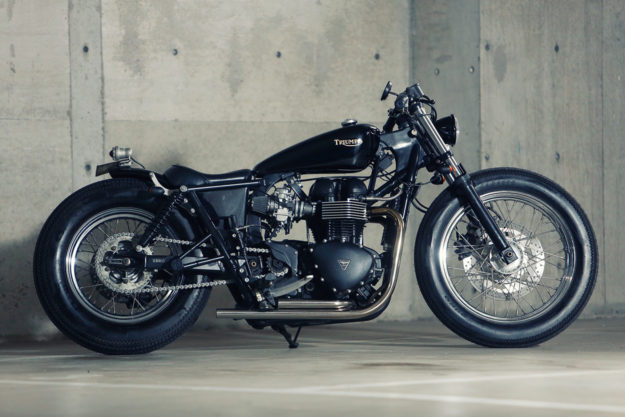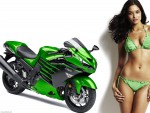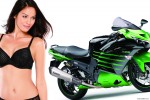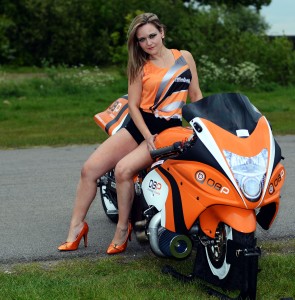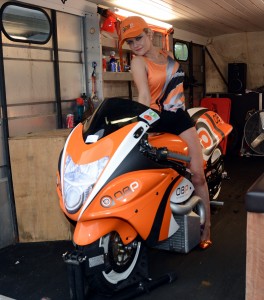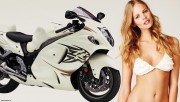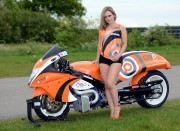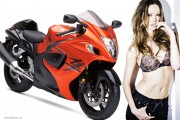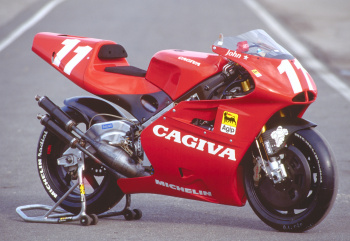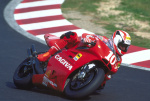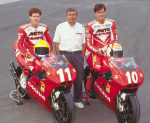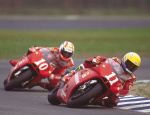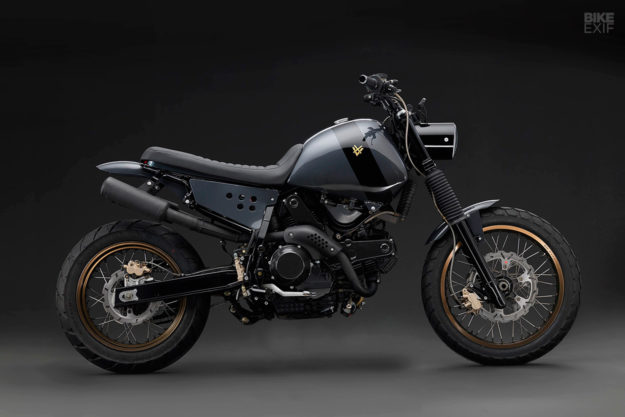
Everyone has a scrambler in their arsenal these days, from the biggest OEM to the custom shop on the corner. But there’s an emerging trend that we’re finding even more appealing: custom adventure bikes.
Take an 80s or 90s dual sport, spin it just right, and get ready to explore in style. Walt Siegl did it with his L’Avventura project, and now another heavy hitter has had a go. This is the ‘VX Traveller,’ built by Venier Customs and based on a 1999 Cagiva Gran Canyon.
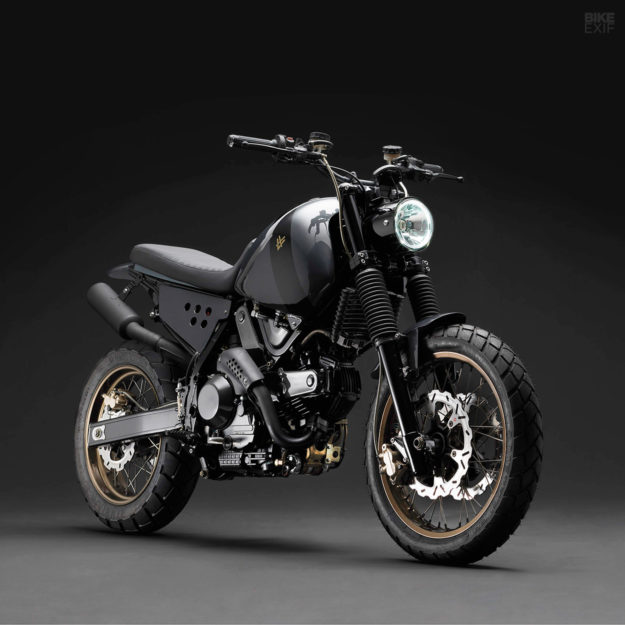
The Gran Canyon was only made from 1997 until 2000, back when Cagiva and Ducati were still stablemates. Like its predecessor the Elefant, it was powered by a Ducati mill—more specifically, the one from the 900 SS.
This Gran Canyon has been customized for a very picky customer: shop boss Stefano Venier himself. He bought the Cagiva for two-up adventure touring with his wife, but since he’s known for his impeccable taste, this dual-sport was never going to stay stock.
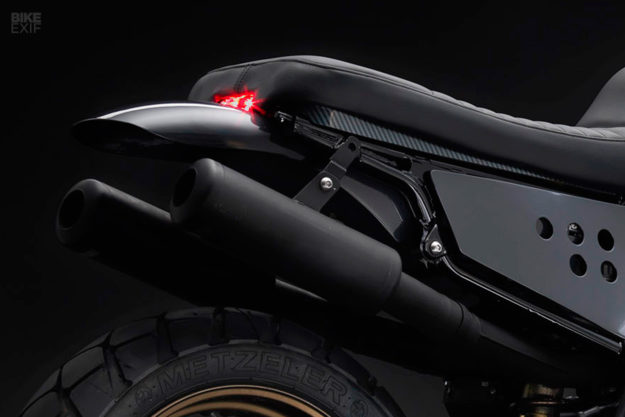
In their HQ in Italy (they have one in Brooklyn too), the Venier team set to work. The Gran Canyon’s stock bodywork went straight to the bin—except for the original seat. “I used the bike with the original seat for a summer,” says Stefano, “and it was so comfortable that I couldn’t lose it.”
“I wanted to have a cool seat, but comfortable like the original and with the original mounts. We achieved this with an afternoon of shaping and modifying the original, which was then upholstered in leather from one of the best guys around my home town.”
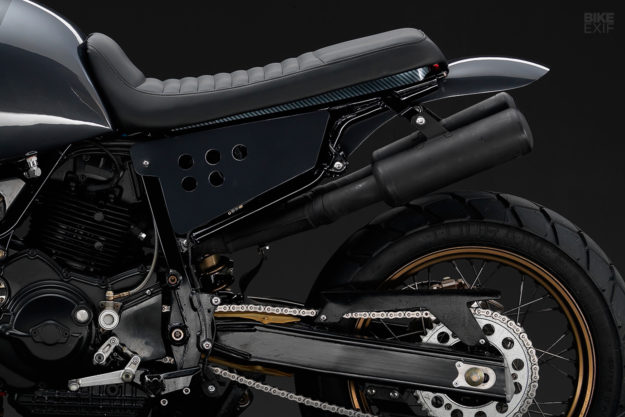
The subframe was cleaned up and shortened—which meant relocating a bunch of electronic components. A pair of aluminum side covers was fabricated, along with a pair of fenders.
The fuel tank is custom too; it’s been shaped from aluminum, and holds 11.5 liters. “I know it’s not a lot,” says Stefano, “but I had to compromise with the style. The Cagiva Elefant had 14 liters, so we’re not far off.”
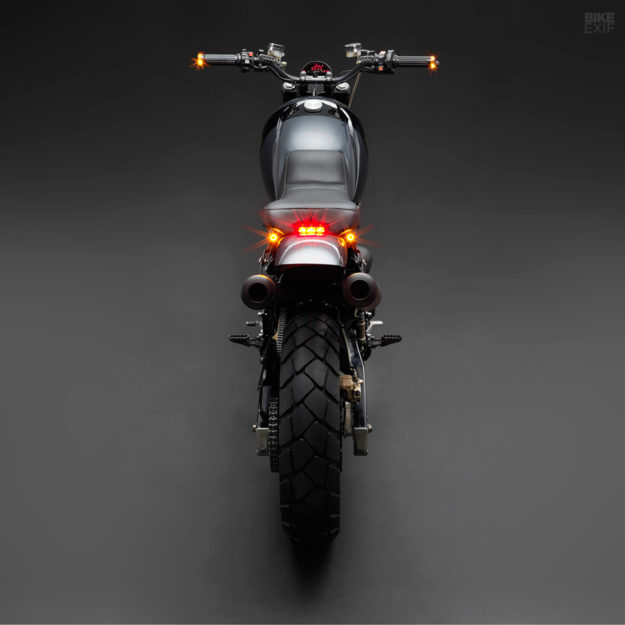
Since practicality was high on the list, there were a lot of things that Stefano didn’t want to change. The air box is still there, and the wiring loom’s been edited only where needed, rather than completely ripped out.
Most of the Cagiva’s running gear is still OEM as well. “The donor motorcycle has a Marzocchi 45 mm front fork, a Sachs rear shock and a very capable Nissin braking system,” he explains.
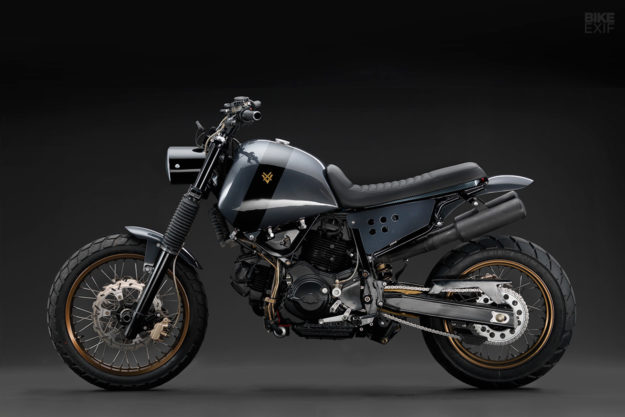
“The frame makes the Gran Canyon incredibly agile and fun to ride, but the best thing is the Ducati 900 SS fuel injected engine.”
Stefano kept the practical 19F/17R wheels, wrapping them in fresh Metzeler Tourance rubber. The exhaust headers are original too, but they’ve been modified to slip onto a pair of one-off mufflers from Mass Moto. The whole system’s been redone in a high-temp black finish.
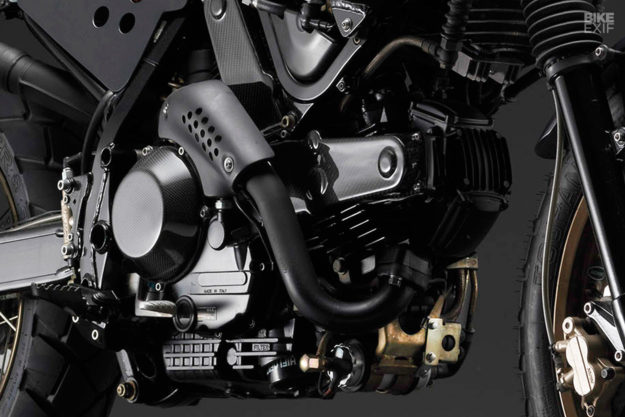
Moving to the cockpit, Venier has installed new handlebars, along with Motogadget grips and bar-end turn signals. The speedo’s from Motogadget too, and is mounted on a hand-made bracket.
A custom-built headlight lights the way, and the tail light and rear turn signals have been built into the back of the frame.
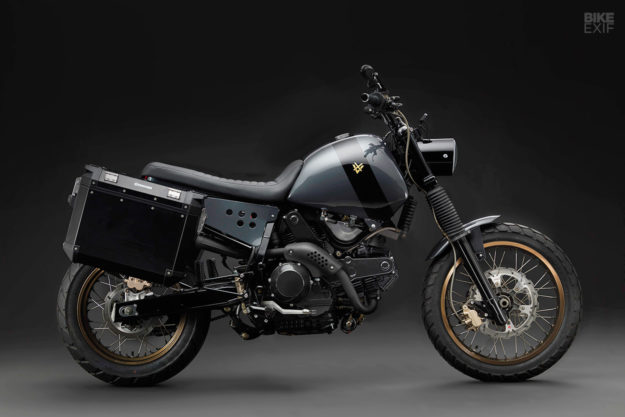
Luggage experts Kappa came to the table too, and supplied a set of hard panniers and racks. The guys managed to adapt the Kappa brackets to the Cagiva with minimal fuss.
The VX Traveller is finished off with a typical Venier paint scheme—and it’s absolutely stunning. The warm gray comes from the Fiat 500 Abarth, and is punctuated by gold touches on the logos, brakes and rear shock.
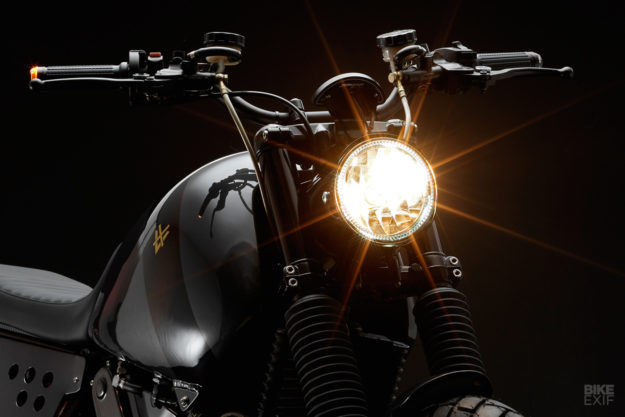
Some fresh powder coated bits, and a set of carbon engine covers, help keep things tidy. And yes, that’s the original wheel color—Stefano liked it so much, he decided not to repaint the rims.
This Cagiva looks as good as everything else that’s rolled out of the Venier workshop. And it’s a decent ride too, according to Stefano. “This bike will give you a very refined no-electronics ride, with 75 hp—or maybe a little more now, with the exhaust. And we lost a lot of weight.”
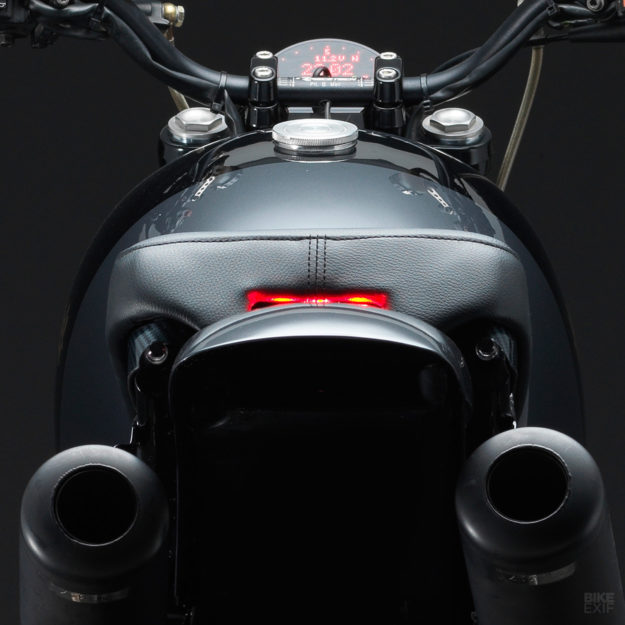
“It’s a unique experience. You can smell the Paris-Dakar, but often you think you’re riding an old school supermoto.”
Stefano has since bought a brand new Honda Africa Twin, so the VX Traveller is for sale. Let’s just hope this isn’t the last time he lays his hands on a 90s ADV bike.
Venier Customs | Facebook | Instagram | Photos: Ikon Productions
